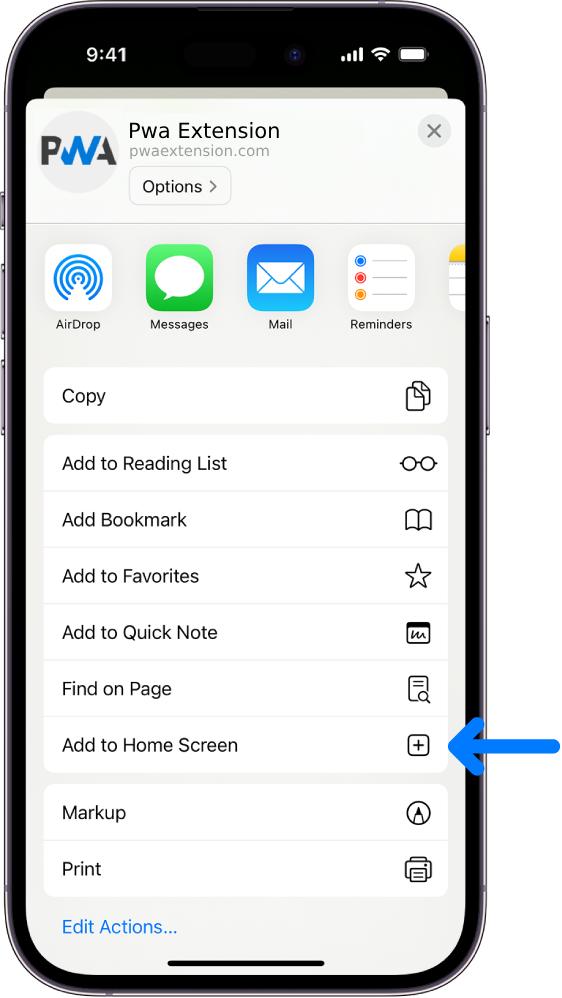Hi Mike.
Good to hear the info is useful. Actually It's good for me to put some of this knowledge down on paper, makes me use the brain and also will also be good for other newbies in the future.
One word of warning Mike. Make sure they do a proper damp check on her, if necessary suggest you might get an independent damp check done by others as well as theirs. The reason why I mention it now is because last year at this time I found a small amount of damp on Elle. Not surprised, after all she was 15 then. As I travelled around looking for a decent repair workshop I found nearly all the work being done by most of them was damp related. Quite a few British vans, some foreign, including Rapido. The worrying thing was they were nearly all under 6 years old!! One that was having a complete overcab rebuild was less than 2 years old. Some of the engineers were saying that because motorhomes were getting more and more popular they were being rushed through the various factories without getting the quality checks and builder skills that older vans like Elle use to get. Big dealers like Haybridge were struggling to find enough workshop facilities to cope with the repair demand.
Sorry to put a bit of a downer on it, I was shocked by what I found and would hate to find out months down the line that you had an expensive problem to deal with. Damp in a van can be very difficult to see and locate without an experienced eye and good damp detection equipment. I did not know about mine until it was spotted on a habitation check, luckily it was found quickly and it was relatively inexpensive to repair..(1000) !
Part two coming up!
OK, van is filled up with fuel, and you are raring to be off on your new adventures.
What you take is what you want and what you may need. Just be conscious of your payload and where on board you load it.
ESSENTIALS
In my view these are essentials, regardless of where you are going and time away.
Wellie Boots. Who knows when it will pour down, when river levels might rise, what muddy pathways you might walk down or even what you might need if you are able to get the van washed.
Hi Viz tabards or jackets. Needed by law in Europe, very advisable over here in case of breakdown / accident or if you are needed to help others in an emergency. Breakdown triangle, wheel levelling ramps and chocks, spare vehicle bulbs, spare fuses, small selection of tools to include gas bottle spanner, flat and phillips screwdrivers, adjustable spanner, hammer, fret saw and anything else you feel is necessary. If you have a separate "drive away" awning or a storm strap for your van awning you will need tent pegs etc and a mallet. I also carry a couple of 5 ton lightweight tow ropes just in case!
Campsites and what types to use
Both the Caravan Club, and the Caravan and Camping Clubs have good quality sites. They don't come cheap, even if you are a member but where they allow non members in then members do get a cheaper nightly deal. Depending on time of year (not all are open all year) and the popularity of location, you may be able to just turn up and get a pitch but with more and more caravans and motorhomes on the road I find that if you are planing a journey then it is worth phoning and booking in advance. Both clubs have apps for mobiles or tablets that make it easy to do. They normally have fantastic toilet blocks, showers, washing machines, dog walks and kids play areas etc. You may be asked for preferred type of pitch (grass, hardstanding, super pitch (with drainage and fresh water) Don't forget to ask for electric hookup if you want it, pitches without electric are normally cheaper). You may be asked for your van registration and / or the van length.
Some sites will allow you to find a pitch you like, pitch up then let them know which one you are on. Other sites work to the rules. You will be guided to your pitch, told to reverse so that your rear right wheel is almost touching the marker peg! Some may allow you to choose whether you want to drive on, reverse on or even go across the pitch. Parking on grass pitches is OK ( If permitted) provided they are firm and not boggy! But driving on the sacred grass when trying to access your hard standing is a criminal offence deserving imprisonment for life!!
Both clubs also authorise smaller 5 van campsites in farms, orchards, pubs etc. They are called Certified Locations by the CC and Certified Sites by the C&CC. You will find them all over the place, use the clubs guides or websites to locate them. Quite often they are off the beaten track and in the back of beyond! We love them, pick ones that suit your abilities and what you want to do in the area. Near a bus route or good foot / cycle path etc. They can be very basic, just somewhere to empty the loo and a supply point for fresh water. Some are more sophisticated with Electric hookup, and perhaps a loo and shower. They are normally cheaper than bigger sites, depends on what they have to offer and because the van numbers are restricted they are normally nice and quiet and peacefull.
Alternatively you can chose to go to a private campsite, normally bigger, brasher, can be more expensive and offer far more facilities including bars, restaurants, swimming pools, kids play areas and equipment etc etc.
Wild camping is where you try to stop overnight without using campsites. In Scotland you are legally allowed to park off road provided you do not block any roads or access, leave the place clean and tidy and don't dump your black waste. There are loads of lovely wild camping places, particularly in the Highlands and around the coastal roads. They do not like large groups of campers hogging one spot and it's normally OK to stay a maximum of one or two nights. Rest of UK is a totally different ball game. Height or width restrictors everywhere. Car parks with no overnight camping notices. You really have to look for somewhere and then decide if you feel safe. Unfortunately our bearded, unwashed travelling fraternity are to blame for that. In this country I believe it's best, and safer to use proper sites.
In Europe there is a totally different approach. They actively welcome motorhomes, most towns and many villages even provide special places to park up for a day or two. They are called Aires, ( in Germany it's Stellplatz) and again be basic with only somewhere to park overnight, some have water and waste facilities, some even showers and toilets. They are either free or very cheap or you may just put a coin in a machine for what you use. The downside is that they can get very busy and you can end up parked so close to each other. We use them occasionally but normally prefers proper campsites, and there are thousands of them, particularly for the added sense of security.
Whatever type of pitch, campsite, field or layby you are in you need to check out the following when pitching up.
First, and most important, is it reasonably level, and can I get off it if it pours down with rain! Motorhomes do not necessarily have cross country tyres so even light boggy areas may cause a problem. Beware of grass pitches where the only way out is uphill over the grass. Select your pitch carefully, I always look to see where the sun may shine if it decides to smile on us. We like the sun on the awning side of the van if at all possible.
Levelling Up Added info 21 Aug 16
Firstly, only use levelling ramps if you have to. Secondly, try to park up so you use levels on your driving side, they are easier to see particularly through your open door.
If you use a fixed point on the ground that you can align the bottom of the door with you can better judge the distance you move the van, in otherwords if you know you need to move 6 inches up the ramp then find a point 6 inches along the ground when looking at the bottom of the open door. Remember if you place the same sized ramp at the same distance on all other required wheels as you did the front wheel that you can see then whatever you do at the front will be mirrored on the rest. Finally, remember you can place the ramp behind the front wheel and reverse if that makes it easier to see. Lastly, provided you have good clutch control then if you are not sure as you go up the ramp then stop, apply handbreak and get out to check.
Oh, and always go up ramps with straight wheels!
Another little trick which might help. If you have a spare ramp (guide ramp) that is more or less the same size as as the one (or two) that you are trying to use on the opposite side, then place it ALONGSIDE your front wheel that you can see, lined up same as the others, then as you start to ride up the unseen ramp(s) by looking at this guide ramp you can get a good idea of your progress, hope that makes sence!
In my opinion the van does not need to be as level as a pool table, a little tolerance can be allowed. Look at the ground, does it have any undulations that you can use to help level up. Even gravel prepared hard standings are not necessarily level front to back or side to side ( or both!). If you have a bubble level indicator or spirit level then great, if not you can get spirit level apps for your smart phone or you can place some water in a glass or you can run some into the sink and they will give you an indication if you are reasonably level or not. I have developed a good eye for the ground and sometimes it's just a case of opening the toilet door and see if it swings one way or other. Using wheel ramps will help where you do need to make adjustments.

There are the big Melenco Wheel Levellers that will give you the most adjustment but they are big and storage may be a problem. Personally I have one large and three normal sized yellow Fiamma levelers and a combination of these normally is sufficient. Using a leveller is a bit of an art that needs practice.
Depending on how you need to level up you might be riding up two equally at the front, or perhaps at the back, or you might need them both under both wheels on one side, intact you might need them under both at the front AND one at the back!! You have a choice of either placing them in front of your selected wheels and driving up to get the correct height. Sometimes it's easier to place front ones to the rear of the front wheels and reversing up (You can watch your drivers side wheel through an open door much easier this way!) Remember to drive gently, no sudden movements or they may disappear across the gravel or grass or you may shoot over the top!!! (That could result in damage to the underside of the van). Use Liz to help you out. When you pace them out, either in front or behind your chosen wheels remember you might need to place them equally distant from the tyres if both wheels need to rise the same amount or one slightly nearer than the other if there is a difference in height levels required. Once you are on your levelers as required then apply hand brake AND put it in gear and if you have wheel chocks then use them. You both will be moving about in the van and you can get a bit of wheel movement.
Getting off the levellers is relatively simple but take care you only move sufficiently so that you can pick them up, don't go so far so that you drive over them with the back wheels!! Another warning, don't just release the hand break and roll off without first moving anything else you may have put under the van, I have done that a few times, last time was only a month ago and one of my 10ltr watering cans got crushed by the back wheel!! You never stop learning!!
Now having leveled up you need to plug in the power cable to the power supply. I hope you made sure you were within your available cable length when you picked that lovely sea view spot in that farmers field!!!
That will do for now, don't forget to email or ring if you have any questions.
See Part 3 >>>>

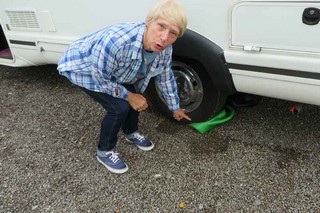
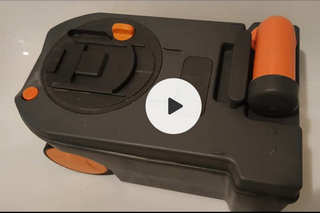
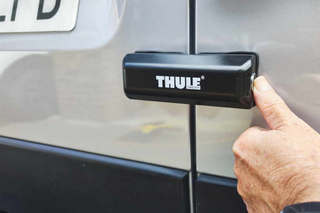
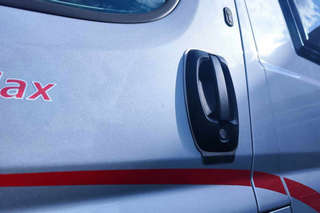


 (share) button at the bottom of your screen,
(share) button at the bottom of your screen, ( Add to Home screen ).
( Add to Home screen ).